1. Lobster Mac and Cheese
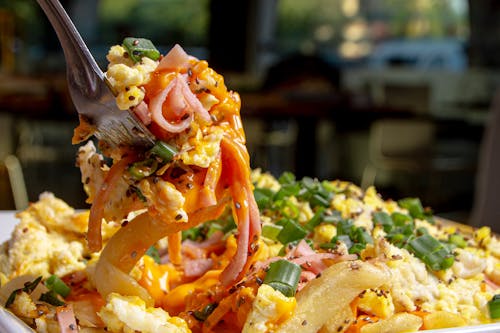
It’s the ultimate comfort food upgrade — gooey pasta mixed with chunks of lobster. But in many restaurants, the lobster is often frozen, overcooked, or used in such small amounts that you mostly taste the cheese. Lobster was once considered a “poor man’s protein” in the U.S. before becoming a luxury marketing tool. Today, tossing a few bits into mac and cheese turns a $3 dish into a $25 entrée.
This dish thrives on nostalgia and indulgence rather than substance. Most versions rely on heavy cream and butter, not culinary skill. Diners walk away feeling they’ve had a taste of luxury, when really it’s just calories cloaked in dairy and marketing. It’s comfort food with a lobster costume.
2. Truffle Oil
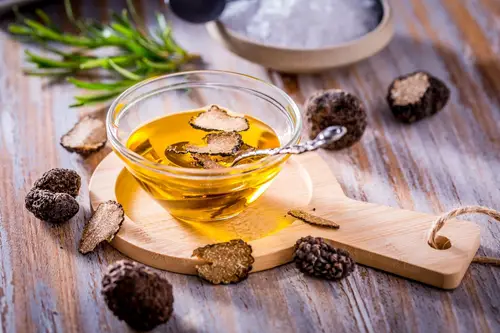
Truffle oil sounds luxurious, but most of what’s sold in American restaurants doesn’t contain any real truffles. It’s typically just olive or grapeseed oil flavored with a synthetic compound called 2,4-dithiapentane, which mimics the aroma of truffles. The result is a product that smells fancy but lacks the depth and complexity of actual truffles. Chefs often drizzle it over fries or mac and cheese to justify a higher price tag, but it’s basically perfume on comfort food.
People love it because it gives that “fine dining” flair without breaking the bank. The problem is, the flavor is one-note and can overpower the rest of a dish. Real truffles are seasonal and cost hundreds of dollars per pound, so truffle oil feels like a shortcut to sophistication. In reality, it’s a cheap trick that’s more marketing than culinary mastery.
3. Avocado Toast
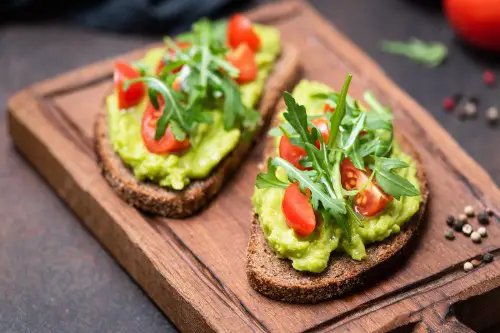
What started as a simple breakfast in Australian cafés turned into a symbol of millennial extravagance. But at its core, it’s just bread, avocado, and salt — a meal that costs pennies to make at home. The “gourmet” versions in U.S. cafés often pile on unnecessary toppings to justify charging $12 or more. It’s a perfect example of style over substance in modern food culture.
Avocados are rich in healthy fats, sure, but nutritionally, this is still a calorie bomb if portioned like many cafés serve it. The appeal is the aesthetic — it photographs well and fits the wellness trend. But paying luxury prices for mashed produce on toast shows how easily marketing can elevate the mundane. It’s basically a guacamole sandwich wearing a halo.
4. Wagyu Burgers
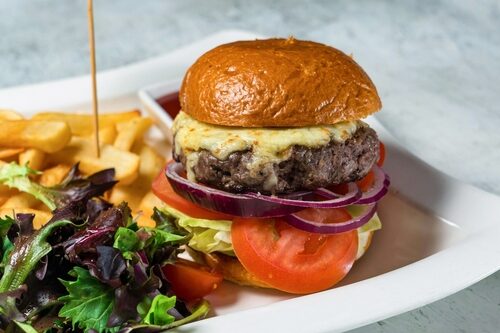
Wagyu beef is famous for its intense marbling and buttery texture, but the “Wagyu burger” at your local bistro probably isn’t what you think. Most of the time, it’s made from crossbred cattle or a small percentage of real Wagyu mixed with regular beef. True Japanese A5 Wagyu is rarely ground up for burgers — it’s far too expensive and delicate. What’s being sold as a gourmet upgrade is often just clever branding.
The burger format also defeats the point of Wagyu’s texture, which shines when cooked as steak. Once ground, much of that signature marbling melts away, leaving an overpriced, fatty patty. Americans love the idea of “premium meat,” but in this case, the prestige doesn’t match the experience. It’s fast food in a tuxedo.
5. Charcuterie Boards
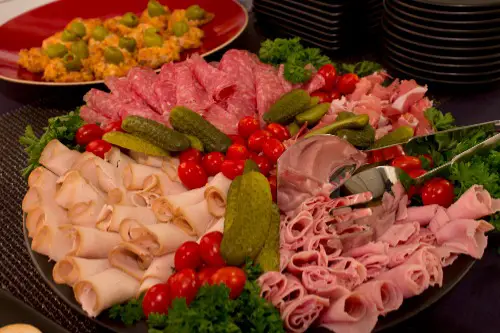
These elaborate meat-and-cheese boards look elegant, but they’re usually just grocery-store snacks with a fancy presentation. A few slices of salami, some crackers, and cubes of cheese suddenly become “artisanal.” The Instagram appeal drives their popularity more than the quality of ingredients. At their core, they’re picnic leftovers dressed up for dinner.
That’s not to say they can’t be delicious — good charcuterie exists. But the average American board uses processed meats high in sodium and cheap cheeses with long shelf lives. The real gourmet versions in Europe use handmade, regionally protected products. Most U.S. versions are more about the aesthetic than the craft.
6. Cupcakes

The cupcake boom of the 2000s turned a humble bake-sale item into a gourmet indulgence. Boutique bakeries started charging $5 per piece for what’s essentially a mini cake with extra frosting. They’re often loaded with sugar and artificial flavorings but marketed as “artisanal” thanks to quirky names and pastel décor. The hype was pure nostalgia repackaged as sophistication.
Cupcakes succeed because they tap into the “treat yourself” mentality. But nutritionally, they’re closer to candy than dessert. Many bakeries focus on visual appeal — glitter, sprinkles, and towering icing — rather than flavor balance. They’re cute, but they’re not culinary craftsmanship.
7. Sushi Burritos
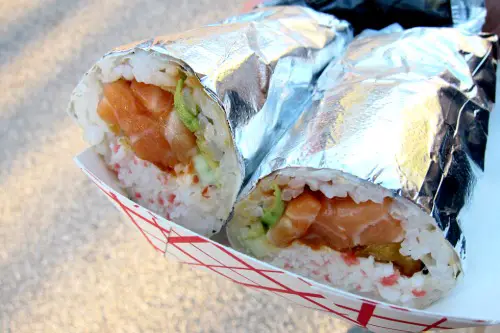
This mash-up started as a fun idea — sushi that’s portable like a burrito. But it quickly became a caloric bomb disguised as fusion cuisine. These oversized rolls often contain double portions of rice and sauce, with minimal high-quality fish. What could be a light, delicate dish turns into a carb-heavy lunch brick.
They appeal to Americans because they feel adventurous without being intimidating. Yet traditional sushi is all about restraint and balance, something the burrito format ignores. The sauces and fillings often drown out the freshness that makes sushi special. It’s fast casual pretending to be fine dining.
8. Bone Marrow
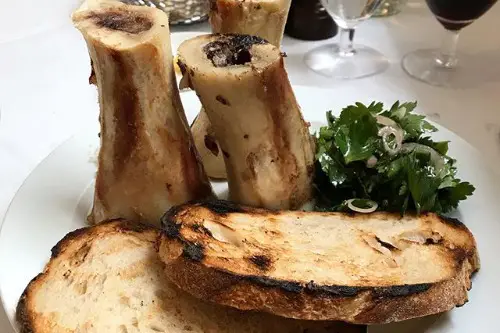
Once considered a by-product, bone marrow is now a menu star in many gastropubs. Served roasted with toast, it’s described as “buttery” and “decadent,” which it is — but it’s also pure fat. The dish exploded in popularity because chefs discovered diners would pay premium prices for something butchers used to discard. It’s the culinary definition of repackaged waste.
Marrow can be delicious in moderation, but it’s more spectacle than sustenance. Restaurants play up the primal vibe — big bones, little spoons, dramatic plating. In truth, it’s a tiny serving of fat that offers little nutritional value beyond calories. It’s indulgence masquerading as refinement.
9. Kale Chips
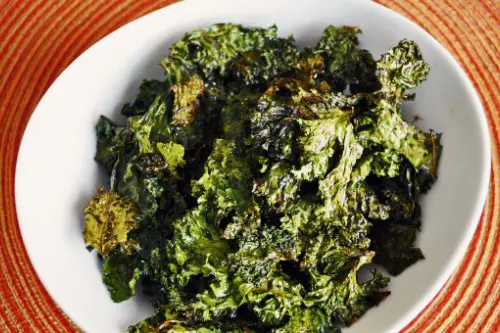
Kale was the health trend darling of the 2010s, and turning it into “chips” made it feel virtuous and snackable. But commercial versions are often deep-fried or heavily seasoned, adding back the calories people think they’re avoiding. Many brands charge premium prices for what’s essentially dehydrated lettuce dusted with salt. The “superfood” label does a lot of heavy lifting here.
Homemade kale chips can be healthy, but store-bought ones are usually processed and overpriced. They sell the illusion of health without offering much fiber or nutrition. Americans love anything that promises guilt-free indulgence, and kale chips deliver that illusion perfectly. They’re basically green potato chips with better PR.
10. Pumpkin Spice Lattes

What began as a cozy autumn drink has turned into a billion-dollar marketing phenomenon. The pumpkin spice latte contains very little actual pumpkin — it’s mostly sugar, milk, and flavoring. A grande from a major coffee chain can pack more calories than a doughnut. It’s the epitome of seasonal hype over substance.
The drink’s success lies in its nostalgia and branding, not its recipe. People crave the “fall feeling” it evokes more than the flavor itself. It’s comforting and Instagrammable, but hardly gourmet. In the end, it’s a dessert pretending to be coffee.
11. Ahi Tuna Poke Bowls
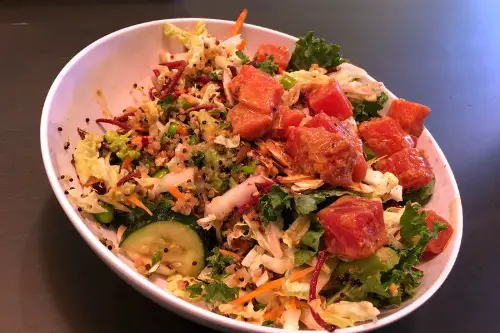
Poke bowls feel fresh and clean, but most American versions stray far from the Hawaiian original. They’re loaded with white rice, sugary sauces, and toppings that add calories and sodium. The fish itself is often frozen or lower-grade, far from the pristine ahi used in Hawaii. Yet the word “poke” gives it an instant gourmet gloss.
These bowls appeal to the “healthy fast food” crowd but often deliver the opposite. True poke is simple — just cubed fish, soy, and onion — not an explosion of sauces and crunchies. The Americanized version caters to visual appeal and indulgence. It’s fast food in a rice bowl.
12. Gourmet Donuts
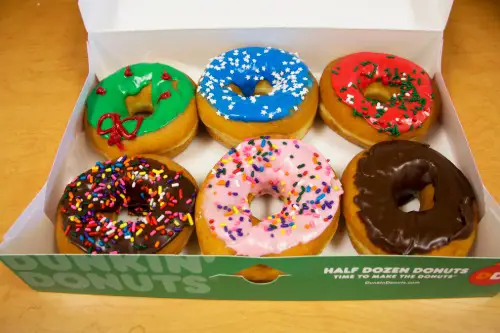
Oversized donuts topped with bacon, cereal, or candy bars became trendy in the 2010s. But beneath the toppings, it’s still a fried dough ring loaded with sugar and oil. Shops justify $5-$7 prices with exotic names and colorful frostings. The toppings distract from the fact that it’s dessert dressed as an event.
People love the creativity and shareability, but most versions are nutritional nightmares. Instead of being lighter or more refined, they’re heavier and more processed. The novelty sells better than the taste. It’s indulgence in designer packaging.
13. Espresso Martinis
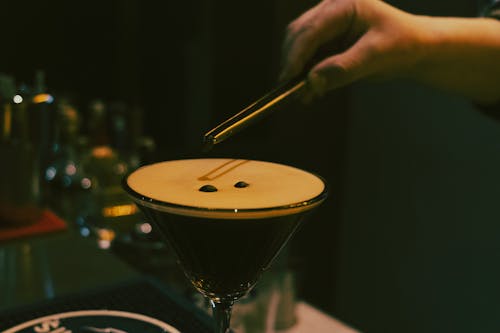
The espresso martini has made a huge comeback as a “sophisticated” cocktail. But it’s essentially vodka, coffee liqueur, and espresso — more sugar and caffeine than elegance. Many bars use pre-made mixes or cheap coffee, yet charge premium cocktail prices. It’s a pick-me-up disguised as a nightcap.
The drink’s popularity lies in its vibe, not its craftsmanship. It looks sleek, it’s easy to order, and it feels “European.” But from a mixology standpoint, it’s not particularly complex or balanced. It’s an energy drink in a coupe glass.
This post 13 Foods That Americans Pretend Are Gourmet But Are Just Cheap Calories was first published on American Charm.


